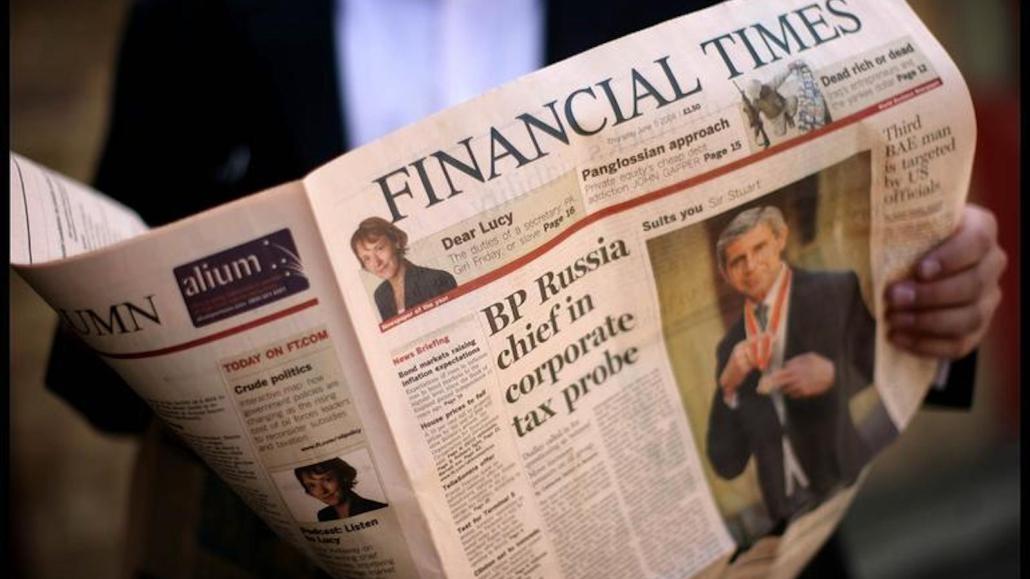
The Financial Times is investing in news aggregation and curation with the launch yesterday of its revamped email briefing FirstFT. But in doing so, it’s siding with old-school editorial judgement over smart algorithms to personalize its offerings.
As for many business titles, email is still a key driver of content discovery for the FT. FirstFT editors hand-pick the most important news items for early-bird traders and professionals from FT and the wider Web.
“Information gets lost on social media and all sorts of other outlets over the day,” the FT’s newly appointed of head of aggregation and editor of curated content Andrew Jack said. “We’re trying to become a neutral judge and offer the big stories of the day, whether they’re coming from us or elsewhere on the Web. Nobody has a monopoly [on the news].”
So instead of waiting for readers to find FT stories in their social streams, FT is bringing the stream to them — all the better to keep readers inside the FT ecosystem. “Aggregation is an increasingly valuable convenience for busy readers which don’t have time to spend the day on Twitter, with its incessant stream of information,” said Jack.
Half of the FT’s 476,000 digital subscribers access its content through their phones and tablets, which is where the FT hopes to hit them with their refreshed newsletter. “Emails have a pretty high return [on investment], particularly if they’re well designed and well targeted,” Jack added.
The move is a continuation of FT’s strategy to focus on the digital side of the business. In a memo from this time last year, editor Lionel Barber said the new strategy was to “shift further away from reactive news gathering” towards “smart curation” and “news in context.” The FT has since hired Jack to lead a team of three other people to work purely on the aggregation and curation of content. Other more technologically ambitious products from the FT of this nature include FT Antenna, which is a semi-automated mix of FT journalists’ Twitter feeds and favored links.
Crucially though, given that FirstFT is free, it offers a new marketing channel for the brand. “It’s a way to reach into areas of the world where the bandwidth is weaker,” said Jack. “Lower tech email can be quite a valuable way for some of the emerging markets to get high quality FT content.”
The battle for the ultimate morning digest of top stories has been going on for a long time, of course. But even while social networks have grown in importance, the inbox is still a key channel for news brands. Quartz’s morning newsletter, for example, has achieved 50 percent open rates, showing what can be achieved with the right combination of content, personality and design. Yahoo’s news digest app offers morning and evening push alerts of 10 of the top news stories of the day in summarized form. The FT would not disclose open rates or clickthroughs for FirstFT.
And not everyone relies on that human touch. Advances in data analytics are also bringing about new, algorithmically generated newsletters from social networks themselves. Twitter’s own personalized email newsletter and those from third-party Twitter services like Tame.it show which stories are being shared in a users’ network — which is arguably more personalized than anything an editor can realistically offer.
More in Media

Publishers revamp their newsletter offerings to engage audiences amid threat of AI and declining referral traffic
Publishers like Axios, Eater, the Guardian, theSkimm and Snopes are either growing or revamping their newsletter offerings to engage audiences as a wave of generative AI advancements increases the need for original content and referral traffic declines push publishers to find alternative ways to reach readers.

The Guardian US is starting its pursuit of political ad dollars
The Guardian US is entering the race for political ad dollars.

How much is Possible’s future in Michael Kassan’s hands?
Some people in the know at Possible said they see the conference taking a bite out of Cannes’ attendance, most acutely by U.S.-based marketers who could save money by staying on this side of the Atlantic.






